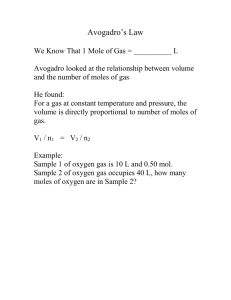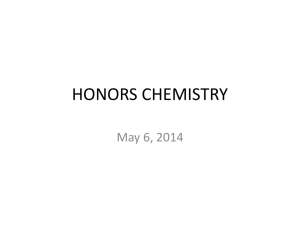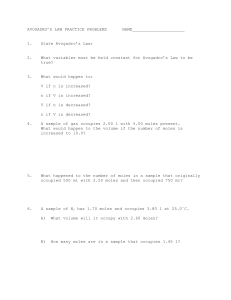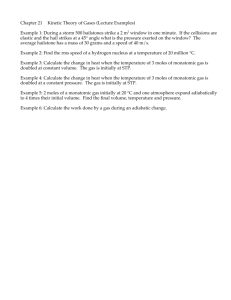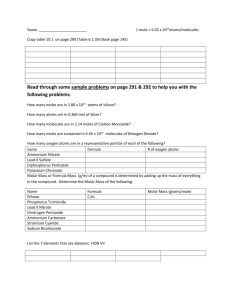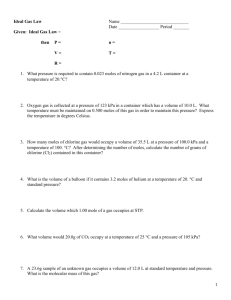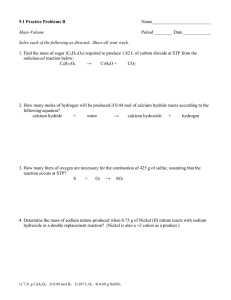CP Chem Unit 10 Gases
advertisement
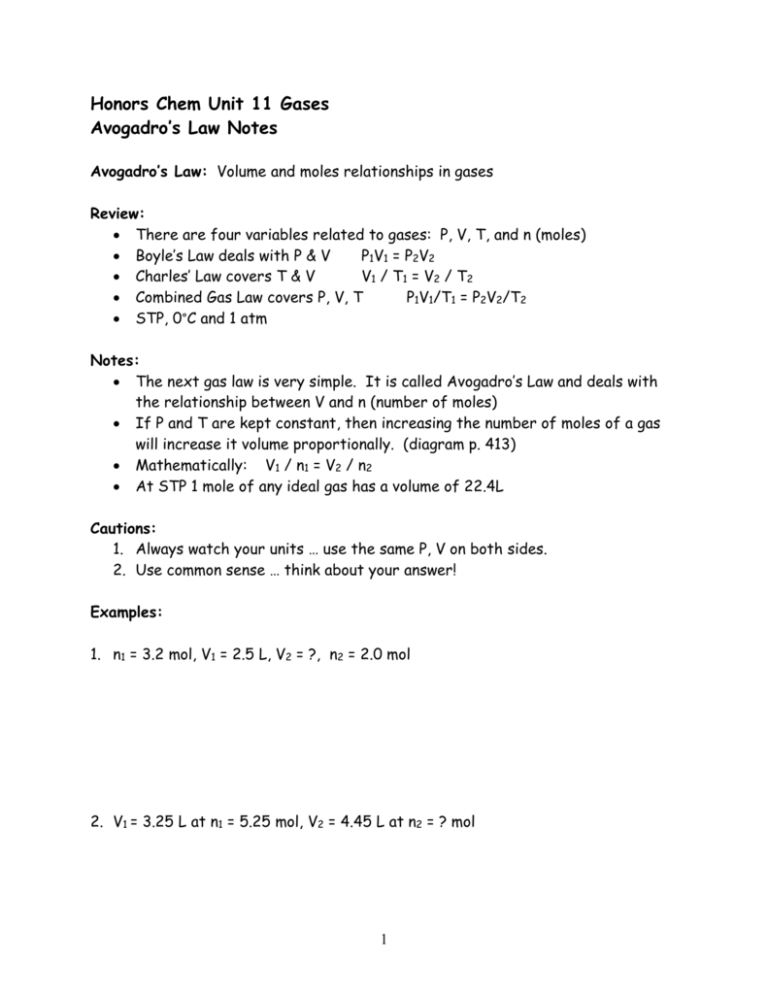
Honors Chem Unit 11 Gases Avogadro’s Law Notes Avogadro’s Law: Volume and moles relationships in gases Review: There are four variables related to gases: P, V, T, and n (moles) Boyle’s Law deals with P & V P1V1 = P2V2 Charles’ Law covers T & V V1 / T1 = V2 / T2 Combined Gas Law covers P, V, T P1V1/T1 = P2V2/T2 STP, 0°C and 1 atm Notes: The next gas law is very simple. It is called Avogadro’s Law and deals with the relationship between V and n (number of moles) If P and T are kept constant, then increasing the number of moles of a gas will increase it volume proportionally. (diagram p. 413) Mathematically: V1 / n1 = V2 / n2 At STP 1 mole of any ideal gas has a volume of 22.4L Cautions: 1. Always watch your units … use the same P, V on both sides. 2. Use common sense … think about your answer! Examples: 1. n1 = 3.2 mol, V1 = 2.5 L, V2 = ?, n2 = 2.0 mol 2. V1 = 3.25 L at n1 = 5.25 mol, V2 = 4.45 L at n2 = ? mol 1 3. V= 475 mL at n = 12.2 g (He), V = ? at n = 4.50 g (He) 4. If 0.214 moles of argon gas occupies a volume of 652 mL at a particular temperature and pressure, what volume would 0.375 moles of argon occupy under the same conditions? 5. If 46.2 g of oxygen gas occupies a volume of 100. L at a particular temperature and pressure, what volume will 5.00 g of oxygen gas occupy under the same conditions? 6. How many moles of O2 are in 500.0 mL of oxygen gas at STP? 7. What is the density of O2 gas at STP? 2

